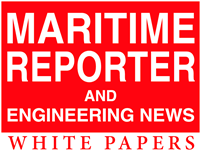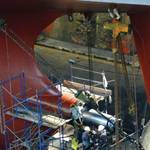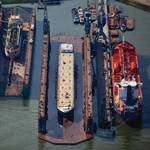
There are numerous factors that are driving global environmental regulatory growth and the growth in renewable lubricant technologies, such as natural resource constraints, standardizing requirements due to globalization, public opinion and pressure, increase in climate change concerns, new technologies, new evidence from research and overall growing Environmental Health and Safety (EHS) concerns, and most recently the improvements in the durability of lubricants made from renewable technologies. According to environmental consultants and advisors, there are currently thousands of new environmental regulations awaiting attention from legislators and regulators around the globe. Different standards hamper growth and thus, pressure to harmonize regulations is likely to continue alongside the regional and global integration of markets.
There are numerous factors that are driving global environmental regulatory growth and the growth in renewable lubricant technologies, such as natural resource constraints, standardizing requirements due to globalization, public opinion and pressure, increase in climate change concerns, new technologies, new evidence from research and overall growing Environmental Health and Safety (EHS) concerns, and most recently the improvements in the durability of lubricants made from renewable technologies. According to environmental consultants and advisors, there are currently thousands of new environmental regulations awaiting attention from legislators and regulators around the globe. Different standards hamper growth and thus, pressure to harmonize regulations is likely to continue alongside the regional and global integration of markets.
The marine industry is one of the most heavily regulated industries and was amongst the first to adopt widely implemented international safety and environmental standards. It is principally regulated by the International Maritime Organization (IMO), which is responsible for the protection of the marine environment and has, over many years, adopted a wide range of measures to prevent and control pollution caused by ships. One of the main goals of IMO is to mitigate the effects of any damage that may occur as a result of maritime operations and accidental spills, and discharges. So far, IMO has adopted 51 treaty instruments for the regulation of international shipping, 21 of which are directly environment-related.
To address the increasing concern regarding the extent of spills, leaks and discharges of chemicals into the oceans, the U.S. Environmental Protection Agency (EPA) has developed the 2013 Vessel General Permit (VGP). Oil-based chemicals that routinely leak into the sea during normal operations include fuel oils, gear oils, hydraulic oils, marine lubricants, greases and cleaning oils. They can reach concentrated levels with serious local impacts on water quality, impacting fisheries, and recreational boating. Under the 2013 VGP, all ships larger than 79 feet must use Environmentally Acceptable Lubricants (EALs) in oil-to-sea interfaces when in the three Nautical Mile limit and in the Great Lakes unless technically infeasible. Similar EAL regulations are coming into effect for smaller vessels. The EPA’s Small Vessel General Permit (sVGP), which is currently pending and expected to go into effect in December 2017, will apply to non-military, commercial vessels that are less than 79 feet in length. According to the “Economic and Benefits Analysis of the Proposed sVGP” document issued by EPA, compliance with the VGP and sVGP allows vessels to meet the Clean Water Act (CWA) requirement to obtain National Pollutant Discharge Elimination System (NPDES) permit coverage for discharges incidental to normal operations.
Currently, EPA and IMO are working together to develop and implement legal standards that address vessel source pollution and ocean dumping. EPA also works with the United Nations Caribbean Environment Program based in Jamaica, focused on reducing land-based sources of marine pollution, including in the Gulf of Mexico and the wider Caribbean region.
With the VGP, drafted sVGP and other global sustainability initiatives firmly in place to regulate discharges by EPA, IMO and other organizations, two main EAL solutions have emerged for marine applications — Hydraulic Environmental Synthetic Esters (HEES) and Hydraulic Environmental Polyalphaolefin and related hydrocarbons (HEPR). While both options are globally available and meet current environmental regulations, the HEPR technology has inherent advantages that drive economic value and enable environmental leadership. While HEES products can deliver high performance, they can be prone to hydrolysis in the presence of water (they can decompose to form acids and alcohols which impact lubricity and can cause potential damage to metals and seals). In contrast, HEPR solutions have excellent thermal and hydrolytic stability and broad temperature range performance.
Building on the proven success of the HEPR technology, some in the industry leading the way with the development of new bio-based lubricant formulations that pair enhanced renewability with an excellent performance profile to meet the growing global regulations and evolving market needs. FUTERRA™ is a new Ecolabel-certified (a voluntary label promoting trusted environmental excellence) renewable hydrocarbon Environmentally Acceptable Lubricant (EAL). According to the European Commission, the EU Ecolabel helps to identify products and services that have a reduced environmental impact throughout their life cycle, from the extraction of raw material through to production, and disposal. The only EAL from a renewable hydrocarbon resource, FUTERRA offers replacement for mineral oil- or petroleum-based lubricants and was designed to outperform other EALs in both wet and dry environments.
FUTERRA outperforms other EALs in several key areas, such as durability, water separability, oxidative stability, hydrolytic stability and compatibility (see Figure 1). It allows for easy conversion and, while some EALs are incompatible with certain types of seals, FUTERRA has very broad seal compatibility, even with traditional seals like NBR, allowing operators to use the seal that is the best choice for their specific needs.
FUTERRA is demulsifying, allowing for the effective separation and removal of water from the fluid and system (see Figure 2). A product that is capable of quickly and completely separating from water has multiple practical applications, such as allowing operators to recycle and reclaim product contaminated with water. In comparison, HEES lubricants are emulsifying, which means they have a tendency to absorb water contamination. Many producers of HEESs have claimed that, given their fluids’ ability to emulsify water, there is no need to check for or remove water from the system. However, most OEMs disagree, recommending draining and refilling any fluid with water content above 5 percent. The industry generally appears to be moving toward use of demulsifying lubricants, which allow water to be easily removed through normal separating methods. Because of this capability, HEPRs generally offer longer drain intervals and enhanced performance, which result in long-term return on investment.
FUTERRA has better oxidative stability compared to other EALs (see Figure 3). Oxidation is a chemical reaction that naturally occurs with a combination of the lubricating oil and oxygen. The rate of oxidation is accelerated by high temperatures, water, acids and other catalysts such as copper. Generally, oxidation reduces the service life of a lubricant by half, for every 10 degrees C (18 degrees F) increase in fluid temperature above 60 degrees C (140 degrees F). FUTERRA is more capable degradation in the face of moisture and heat.
FUTERRA performs well in environments (see Figure 4). In early versions of biodegradable products, there had been performance issues at low temperatures. FUTERRA accomplishes this and more. FUTERRA even has a lower pour point than the Polyglycol HEPG products that are based similar chemistries to anti-freeze.
Air contamination can have serious effects on lubrication. Air can exist in oil in four different states of coexistence (dissolved, entrained, free and foam). Foam indicates more than 30 percent air, which can lead to numerous problems, including oxidation, thermal degradation, poor heat transfer, retarded oil and cavitation. Depending on the machine design, application and aeration severity, it is possible that all five of these conditions could be happening concurrently. Air is a real contaminant that requires thoughtful monitoring and and left unattended, it can destroy equipment. FUTERRA has near zero foam tendency (see Figure 5), thus, eliminating the problems associated with air contamination.
FUTERRA resists corrosion (see Figure 6). The need for corrosion inhibition in a wet environment has been a need as long as there have been vessels in the water. The rods in Figure 6 were immersed and heated in a water contaminated stern tube fluid. Testing results show that FUTERRA protects from corrosion even when water is not removed from the system and allowed to contact the metals. Corrosion and sludge in the system plug filters and reduce the life of the equipment, but with FUTERRA corrosion is not an issue. FUTERRA’s corrosion inhibition capabilities reduce the need for oil and filter changes and extend equipment life, thereby reducing maintenance. Ultimately, this reduces expenses and increases flexibility.
FUTERRA has incredible resistance to hydrolysis (see Figure 7). FUTERRA is made from chemistry that is designed to resist hydrolysis, and it also removes acid from the lubricating phase keeping corrosive materials out of equipment in the face of moisture contamination. This is the first EAL ever designed to not only resist but provide a means of dissociating acids from the lubrication zone. FUTERRA is the only EAL that acts like an oil. FUTERRA succeeds in places where EALs that are sensitive to water and hydrolysis have failed, which will keep your equipment running better for longer.
With unsurpassed durability, FUTERRA minimizes fear of fluid failure while extending the life of the fluid and offers the ultimate compatibility with legacy equipment and seals. By meeting current and pending global environmental regulations, including EPA’s VGP and drafted sVGP, FUTERRA allows operators to future-proof their fleets by addressing evolving standards upfront in a cost-effective and performance-enhancing manner. In fact, FUTERRA is backed by a limited warranty for stern tube applications that surpasses anything in the market today. FUTERRA not only offers the highest level of but also ensures compliance for years to come.
For more information on FUTERRA or any of RSC Bio Solutions’ environmentally acceptable products, as well as regulations,
applications and considerations, please visit www.rscbio.com.

Anything can happen on a jobsite. Your equipment could malfunction or the weather might cause a whirlwind of unexpected issues, or even worse, someone could get hurt. Unfortunately, not much can be done when circumstances such as those arise, which is why developing preventive strategies is crucial to having a successful and safe project. One of those strategies is always choosing safe and reliable lifting equipment. But the question that remains: is it safer to rent or to buy?

By operating on both land and water, marine repairers and equipment installers tackle a variety of tasks from general maintenance and repair, to upgrading and installing state-of-the-art systems and equipment. Along with these tasks comes a wide array of maritime risk exposures, both large and small, which the business owner needs to adequately address.